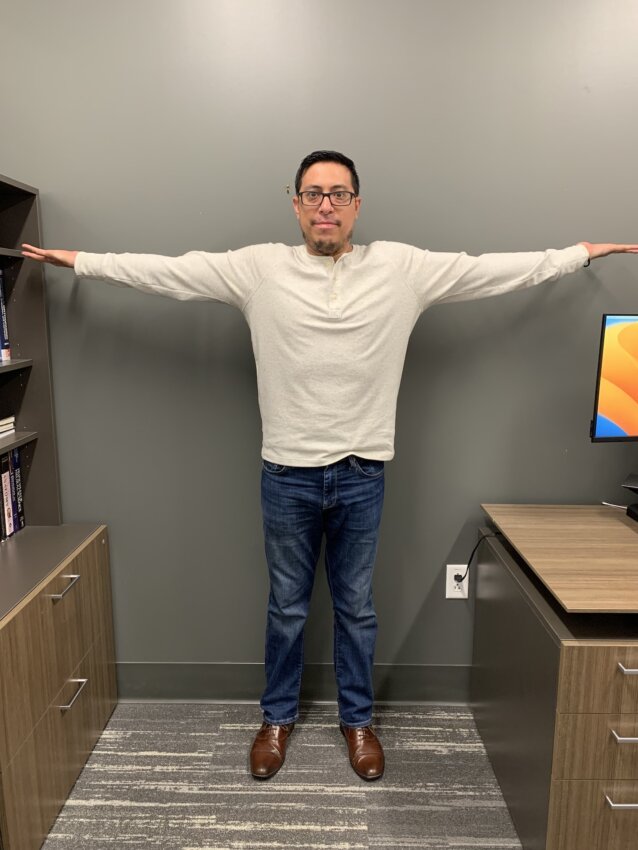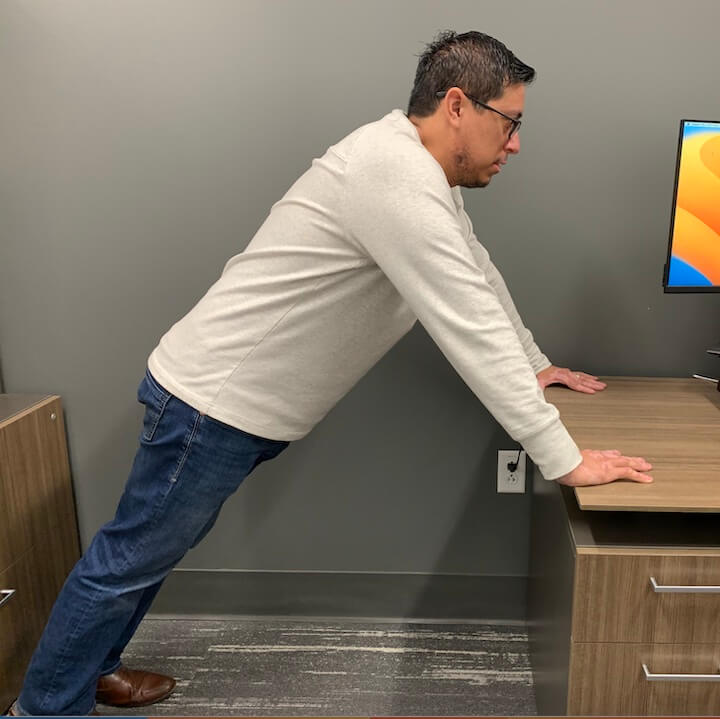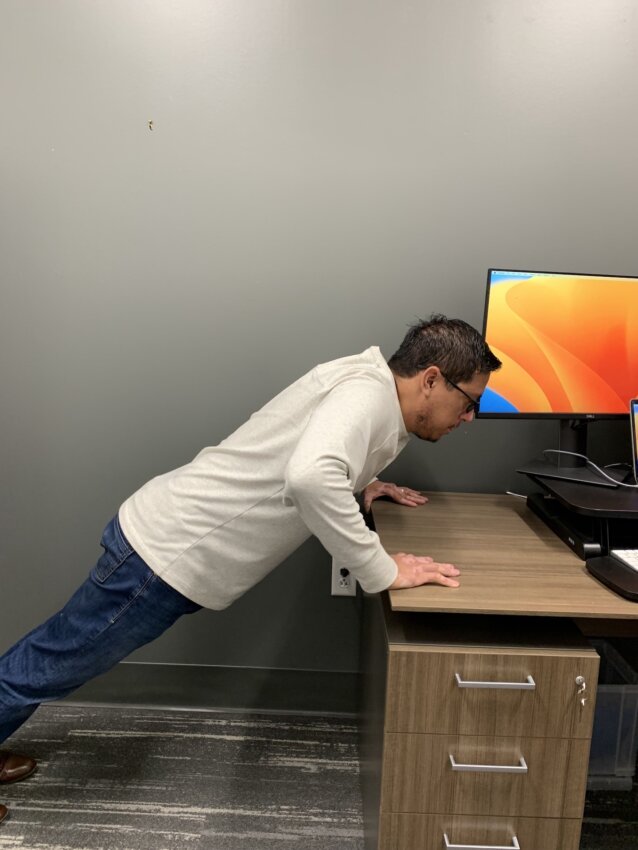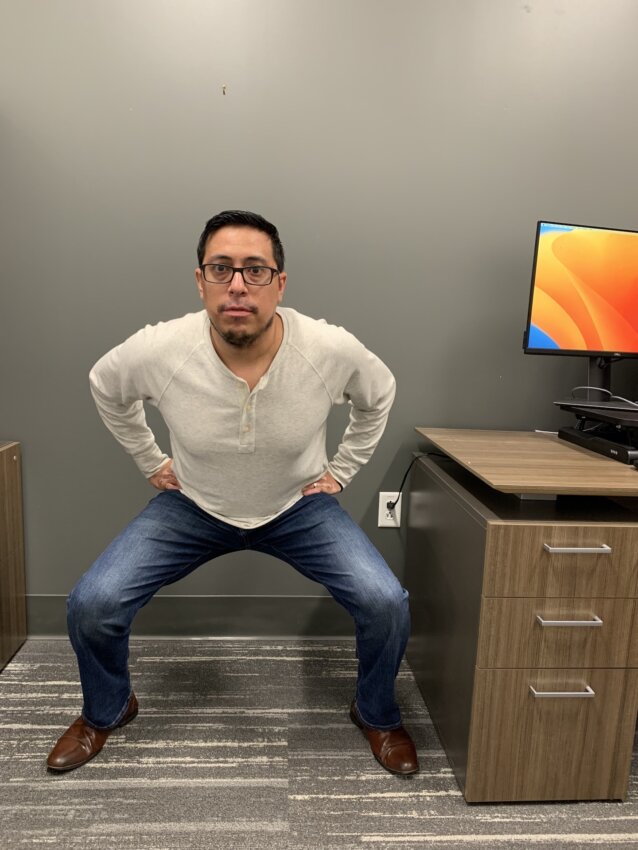
By Bradley Tragord, PT, DPT, DSc, associate professor, Department of Physical Therapy
 People who are physically active, tend to live longer and healthier lives. Individuals with risk factors like high blood pressure, diabetes or even a smoking habit, can benefit from incorporating physical activity into their daily routine.
People who are physically active, tend to live longer and healthier lives. Individuals with risk factors like high blood pressure, diabetes or even a smoking habit, can benefit from incorporating physical activity into their daily routine.
The U.S. Department of Health and Human Services recommends that adults complete 150 minutes per week of moderate-intensity physical activity, or 75 or more minutes per week of high-intensity physical activity. Two of these days should include muscle-strengthening activities.
However, 150 minutes can be a big ask while balancing a challenging work-life schedule, especially when prolonged periods of sitting or relative inactivity are required. That said, there are a few ways to keep your muscles active at work.
Creating time for yourself is critical to incorporating muscle activity at work. Consider taking mini breaks each hour to get up, move or change position. Take advantage of walking to appointments or staff meetings. Using the stairs instead of an elevator is a great way to incorporate movement and muscle activity into your routine. Many individuals find it helpful to leverage lunch breaks to conduct planned physical activity. Even taking 30-60 seconds at your desk to move can be beneficial.
Here are five exercises that can be done at or near your desk.
1. Chin Tucks.
Draw your head and chin backward toward your spine as if you’re trying to give yourself a double chin. The chin tuck activates the neck flexor muscles that are necessary for optimal function and stretches key neck and head muscles that are often tight.


2. Standing T and Y exercise.
For the T exercise, stand and place your hands on the front of your thighs. Move your arms in a straight line outward to the sides so they are in the same plane as your body, pointing your thumbs behind you. Consider squeezing the shoulder blades gently together. To complete the Y exercise, follow the same steps, but finish with your arms and hands slightly extended between the head and shoulders. These movements can help activate the rotator cuff and shoulder blade muscles. It’s frequently thought that the middle back muscles are weak and overstretched compared to the anterior chest muscles. Therefore, the standing T and Y activation may be especially helpful for individuals who sit for prolonged periods of time.



3. Desk push-ups
Place your hands on your desk and your feet on the floor, extended into a plank position. Lower yourself toward the desk and push yourself back up at your own pace. Push-ups are likely one of the best all-around muscle activities for the upper body. Push-ups may seem like a basic exercise that work only your arms and chest, but they require great core activation and individuals can do them in their office or by using the desk to adjust for any ability level.


4. Standing desk squat/body weight squat
To work on lower body strength and power, consider completing a series of squats at your desk. You can modify the squat by holding onto a desk to assist in lowering and raising. As you become accustomed to the movement, you can remove the desk and incorporate speed into the routine. The depth of a squat can be adjusted to help ensure the movement is well tolerated, especially for those who feel knee pain or stiffness. With time, it’s not uncommon to see individuals steadily improve their squatting ability, including depth.


5. Single Balance
Working on single leg balance is a fantastic method to activate the core and lower extremities. You will also likely improve your sense of self movement as you consistently work on balance. You should work to stand for 30 seconds on one extremity. If unable to do this, consider using your hand on a desk top for support and slowly removing the amount of assistance as you improve. For more advanced balance training, consider closing your eyes, moving the opposite extremity back and forth (as to throw your own balance off) or even standing on alternative surfaces.


Walking is a bonus muscle activity that is highly recommended. Walking on the spot or incorporating walking throughout the day is potentially the most efficient method to improve health outcomes. Walking activates the quadriceps, hamstrings and gluteal muscles. It also activates the lower legs (gastrocnemius and soleus). Benefits of walking include improved circulation, muscular endurance and dynamic balance.
According to the American College of Sports Medicine, individuals should seek medical evaluation and clearance to engage in exercise programs or regular physical activity. Not all exercise programs are suitable for everyone, and some programs may result in injury. Activities should be carried out at a pace that is comfortable for the individual and individuals should discontinue participation in any exercise activity that causes pain or discomfort.

